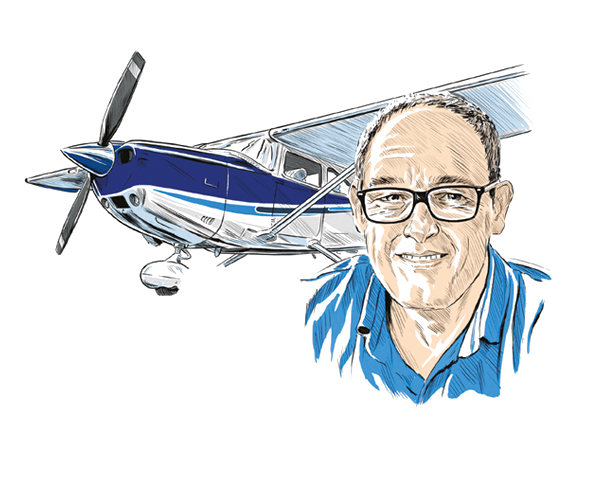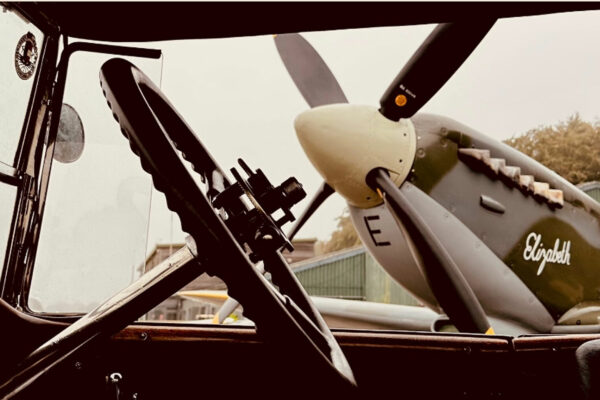I’m not sure how many people in the UK have heard of Martha Lunken. She’s a brilliant columnist who writes regularly in FLYING magazine, she flies out of an airport that shares her name thanks to a previous marriage (KLUK – Lunken in Cincinnati), she worked for the FAA as a safety manager, she has been an instructor and designated pilot examiner (DPE) and has given countless check rides over the years to people who wanted to be type rated to fly DC-3s, among other types. Martha Lunken is a bit of a legend, and at 78 continues to fly her beloved Cessna 180 from ‘her’ airport.
Her relationship with the FAA has seen some change. I’m sure she was respected for her good safety work, but from her writing I’d guess that she wasn’t always great at tolerating what she saw as ‘mediocre middle managers’, and I’d be willing to bet that office politics were not at all her thing. Since leaving the FAA there have been some incidents, one of which saw her designated pilot examiner (DPE) privileges removed. But recently Martha screwed up, and when the FAA came
calling it was with an emergency revocation of all of her pilot certificates.
Like many of us Martha had some life boxes to tick. Apparently when out flying her Cessna 180 she was overcome with the irresistible urge to fly under a bridge, which she did. She’s since said, “I knew it was illegal and I did it anyway. I’m 78 and I’m still not very mature and I hope I never am.” It turns out that an automatic camera snapped her passage under the bridge and the FAA investigated. Typically, flying under a bridge would end up with a temporary suspension, but there was an additional problem. After having flown under the bridge Martha contacted Cincinnati approach which said there was no transponder/ADS-B signal being received, she recycled her transponder and everything returned to normal. The FAA surmised that she’d deliberately turned off the transponder, and the result of both offences was the emergency revocation of her pilot certificates along with a letter in which the FAA said she could not be trusted to comply with aviation regulation.
“The humble transponder is an incredibly important link in the aviation safety chain”
There’s been quite a debate about the suitability of the FAA’s actions, with sides lining up to condemn and defend in more or less equal measure. Clearly flying under a bridge was a dumb thing to do, and the bridge in question – the Jeremiah Morrow Bridge – is over a stretch of river often used for fishing and hiking so there has been some concern expressed about third party risk. But full revocation rather than temporary suspension is considered harsh by many.
There is, however, a bigger issue, and one that’s being paralleled in the UK. Martha was busted because she flew under a bridge, but also because her transponder was working intermittently. The FAA thinks that was caused by Martha’s hands rather than a technical issue. Martha thinks the transponder rattled loose during a couple of grass airstrip landings just before flying under the bridge. In the US there is mandatory carriage and use of an ADS-B transponder in most places, and while we don’t have the same ADS-B mandate here, we do have rules that make it illegal to fly with your transponder turned off, although there are some specific exceptions like formation when flying in close formation or when requested by ATC.
The result is that the humble transponder is an incredibly important link in the aviation safety chain both for ATC and for pilots with some form of Electronic Conspicuity monitoring, while also being a piece of monitoring equipment that may well provide the evidence against you should you transgress, accidentally or otherwise.
As I have said before, I know of people in the UK who fly without turning on a working transponder, and since the Martha incident broke cover (the flight actually took place in 2020, it just took the FAA a while…), I’ve read of similar intentions from pilots in the US. The answer is of course the full and correct application of a Just Culture in General Aviation.
The CAA helpfully defines a Just Culture in its Skyway Code as: ‘A culture in which front line operators or other persons are not punished for actions, omissions or decisions taken by them that are commensurate with their experience and training, but in which gross negligence, wilful violations and destructive acts are not tolerated’. It doesn’t mean, as some people think, that everyone gets away with everything. Martha had the experience, knowledge and training to know what she was doing was wrong, and she was rightly held accountable for that (although the punishment could be debated).
The challenge then is to make sure that regulators don’t just pay lip service to a Just Culture, and that we don’t treat it as the blanket ‘get out of jail card’ that it most definitely isn’t. We all have to work hard to apply it widely and consistently (CAA, you might want to revise the new and shiny CAP 1404 in this respect), and to make it an integral part of aviation culture.







